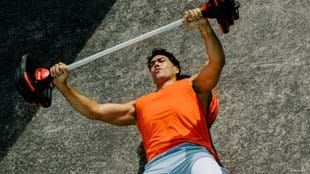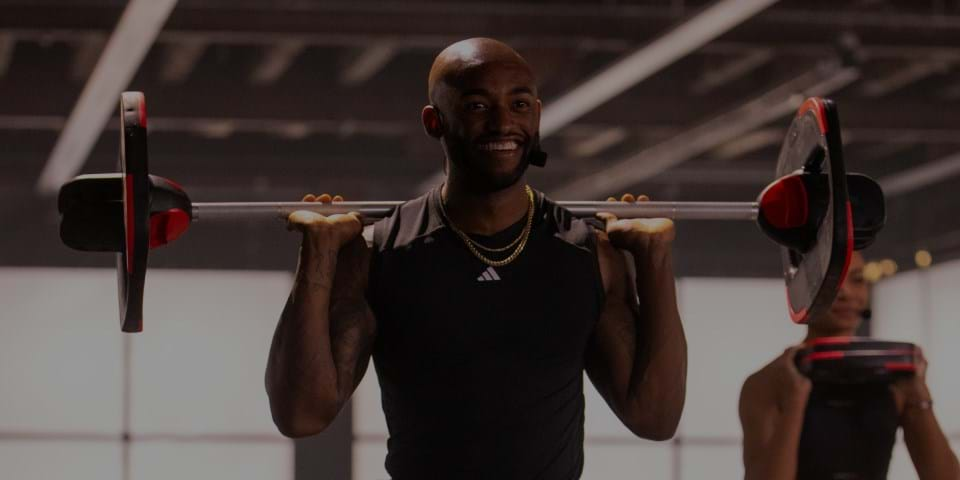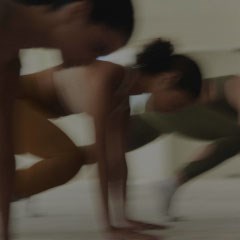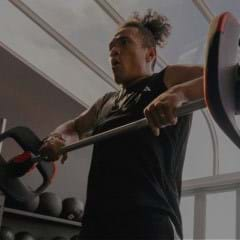If you’re anything like me, when you first started teaching, it was addictive. The rush of standing on stage, making other people feel happy, the validation of being told what a great Instructor you are… can make plain old training by yourself — or even attending someone else’s class — a bit dull. If I got asked to cover or team-teach, I would always forgo my own training since teaching was invariably much more fun. Why hit the weights when I could cover another BODYPUMP™ and make money at the same time?
After a few years, however, I realized that always prioritizing teaching over my own training was accompanied by some downsides. For starters, teaching inevitably takes a lot more time and mental effort. Before you even get to class, you’ve got to set aside time to prep your choreography. You arrive early and leave late to make time for conversations with members. No matter what kind of day you’re having, you need to leave your troubles at the door and put your game face on. If you’re feeling tired, you still need to lift your energy high to motivate others and be a role model. And you’re always putting everyone else’s workout before your own.
It was only after I tore my ACL and was forced to take time off teaching that I appreciated the importance of variety to enhance your teaching longevity. Nowadays, I make sure to include time for my own training and I prioritize that over taking on extra covers that can make me feel depleted. If all you’re doing is teaching, here are five reasons to factor in your own training:
- Fill your own cup
As much as we love teaching, it does require a huge amount of energy – both physically and mentally.
“I was a triathlete for about seven years while also teaching classes,” says Bevan James Eyles. “And the reason I did it was that when you work in fitness, a lot of your time and energy is spent helping other people. After a couple of years of teaching, I just felt I needed something for my own fitness. Even though I loved that aspect of my life, I needed something for myself.”
Anthony Oxford agrees: “Because our responsibility in class is to ensure members have a safe and effective workout, our own exercise inevitably gets compromised. I do my own training outside of my classes, whether that’s heavy lifting in the weights room or attending someone else’s class. I still like to be coached myself; it’s good to switch off from other people’s workouts and be totally immersed in the training.”
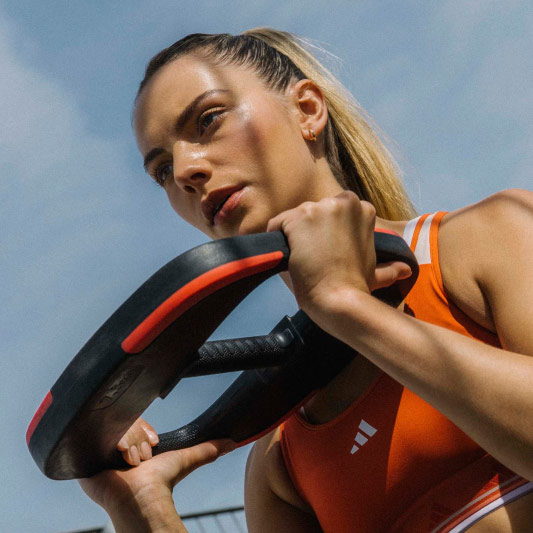
- Push your limits
Most of us are familiar with the RPE scale — the Rate of Perceived Exertion — which measures the intensity of the exercise by how hard we think we’re working. The maximum effort is 10 and is defined by being completely out of breath and unable to talk, feeling almost impossible to keep going. At 9 you can barely breathe and only speak a few words, and even 7-8 is described as borderline uncomfortable, short of breath, but you can speak a sentence. For teaching, most of us will have to sit around 4-6 (moderate intensity) where we are breathing heavily, but can hold a short conversation. If the only training we do is our teaching, we’re never going to be pushing those upper limits where we can increase our own fitness.
“Personally, I don’t think I’m reaching my maximum potential while teaching,” says Kaylah-Blayr Fitzsimons-Nu’u (KB). “Obviously, I’m showing options, I’m floor coaching, I’m getting tired myself because exercising and talking at the same time is hard, so maybe I’m pulling back a little bit. I’m still giving 100% to my class but I feel like I need to have my own time after that to really train, so I don’t have to think about the cues I’m saying and I can just focus on my workout."
- Avoid injury by cross-training
You may teach a variety of programs, helping to maintain balance in your training. However, it can be easy to overdo one program, which can run the risk of injury and overuse by overloading a particular muscle group or energy system. For example, while cycling is brilliant for improving cardiovascular endurance, it misses out on the benefits of improving bone density which we can get from resistance training or high-impact exercise.
“Doing my own training means I have absolutely no movement restrictions or injuries,” says Otto Prodan. “I’m physically fit to teach my classes and focus on my class participants rather than my own fitness levels, or my own training during the classes.”
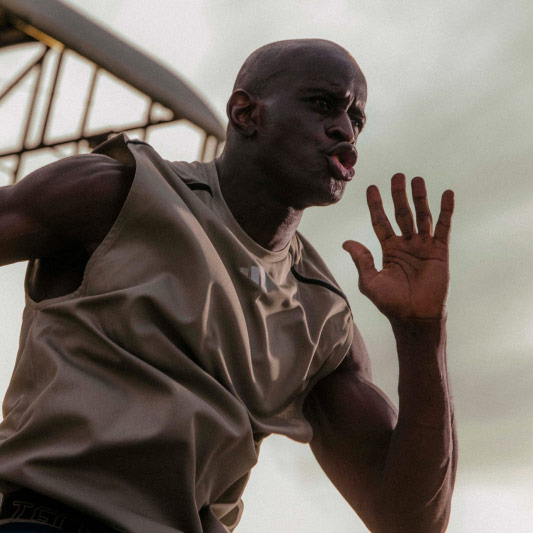
- Get even fitter for teaching
“Training outside of classes gets you even fitter for teaching,” says KB. “You’ll have better cardiovascular endurance, so you can last longer. When I first started teaching, I really struggled with the whole breathing and talking thing, so doing my own training has helped me to manage that.
“You’ll be a better role model for your class participants, which is really important. You’ll be stronger so you can demonstrate moves a lot better. For example, if you’re teaching LES MILLS GRIT™ Athletic and you can jump really high or far, that’s going to be really motivating for your class. It’ll also amp up your self-belief and confidence that you can perform at a high level.”
Bevan adds: “What were the pros of training while teaching? My credibility as an Instructor went through the roof! It gave me a lot of buy-in from my participants because they didn't just see me as this Instructor; they saw me as an athlete. And I think that perception actually helped them get more out of the workout."
- Improve your coaching
Amy Styles, who competed in many triathlons, says: “Doing your own training will also enhance your coaching in classes. I was able to motivate from a more authentic place because I understood what it felt like to be in the red zone, pushing myself to the max.”
“Doing your own training will give you those little golden nuggets that you can share with your class to increase the intensity,” adds KB. “If you know what it takes to perform a really high tuck jump, you can bring that into your coaching. You can bring your own experiences of how the moves feel into your teaching, which also makes it more authentic to you and can really improve your connection with members. “For example, when I was training with Des [Helu], he gave me these awesome things that I could say in my classes. He was teaching me about hip drive and arm swing, flexed foot and pointed toe in sprinting, so I could take all that knowledge and share it with my classes.”
WHAT PRESENTERS DO OUTSIDE OF TEACHING
Kaylah-Blayr Fitzsimons'Nu'u: “I do a lot of weights and I also my own cardio. I’m not much of a runner, I’m more of a jump on the bike situation. I’ll do LES MILLS SPRINT™ 18 (shout out to Khiran Huston – you’re awesome!) and I do a lot of other people’s classes: LES MILLS GRIT™, BODYCOMBAT™, BODYSTEP™… I love going to BODYJAM™!”
Des Helu: “I try to fit in at least a 15-30 minute run. I do my own strength training on Tuesday, Wednesday and Friday and then try to do Thursday 10.15am LES MILLS Ceremony™, just for my own personal goals.”
Mandi Hirini: “Right now you can find me at any barbell or kettlebell, or dabbling in some animal flow or yoga. I’m currently running through a strength block and have just started a new power block. Anything that makes me feel strong, powerful and challenges me mentally and physically!”
Anthony Oxford: “I mostly do solid compound strength exercises and functional movements that work my whole body effectively and efficiently. It might be heavy squats or deadlifts for 5-10 sets. I always have a clear training plan for my sessions and they normally last 30-45 minutes.”
Otto Prodan: “I don’t count my group training classes as my own workouts. I try and do something outside the classes that will make me better for the classes, such as yoga, Pilates, strength and mobility training.”



